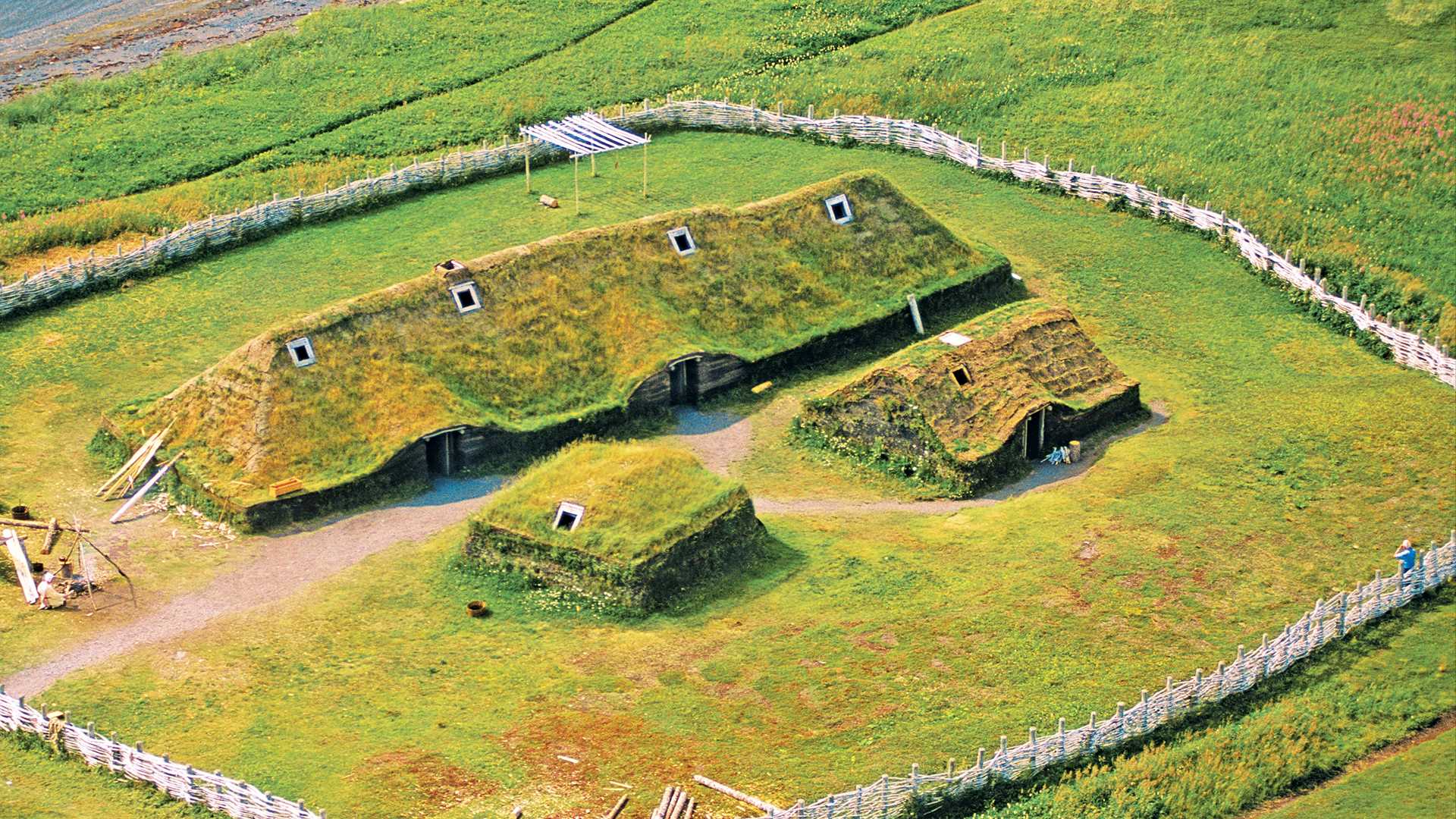When you stand at L’Anse aux Meadows National Historic site and look northwest across the bay from Newfoundland’s Great Northern Peninsula towards Labrador, the view is nearly identical to what the Norse seafarers would have seen 1,000 years ago. Get Inspired by Photos, Videos, Webinars, Stories, and Exclusive Offers. Sign Up
The Norse were Scandinavians from colonies in Iceland or Greenland, and L’Anse aux Meadows is the first authenticated Norse site ever found in North America. It may even have been Leif Ericsson’s short-lived Vinland camp, which appears in the 11th century Icelandic sagas.
The remains of sod buildings, built around 1,000 AD and unearthed by archaeologists in the 1960s, are the earliest known European structures on this continent. From archaeological evidence that shows large storehouses, dwellings built to withstand storms, and artifacts from boat repair, we know that people overwintered here, though it’s likely they stayed only five to 10 years.
Today, you’ll find reconstructions of the Norse houses, along with interpreters dressed in period clothing, which add to the feeling of going back in time, but one of the most remarkable discoveries at L’Anse aux Meadows comes from the earth itself. Norse people used bog iron—a combination of iron oxide, peat, and sand particles produced naturally by the acidic soil—to smelt rivets to fix their boats. The forge discovered here is the first evidence of ironworks on this side of the Atlantic, though it was probably used only once.
This smelting process is incredibly labor intensive, yet some of the modern day blacksmiths who work at the site today have kept this skill alive. Using charcoal and a lot of elbow grease, they smelt bog iron at least once per year and have all of the equipment on display to show visitors how it’s done.
Evidence of Norse occupation is not the only thing that makes this place special. The land was also dotted with fire pits and evidence of tool making and wood working. For Indigenous People long before and long after the Norse, this was a regular summer camp at the heart of their territory. For the Norse this was never home, but a precarious station at the edge of their known world.
In 1978, L’Anse aux Meadows became the first cultural site in the world to be added to the UNESCO World Heritage List, a list which “confirms the exceptional universal value of a cultural or natural site which deserves protection for the benefit of all humanity.” Today, this gorgeous 30 square miles of land, with its rounded hilltops and sparkling bays, is administered by Parks Canada.




